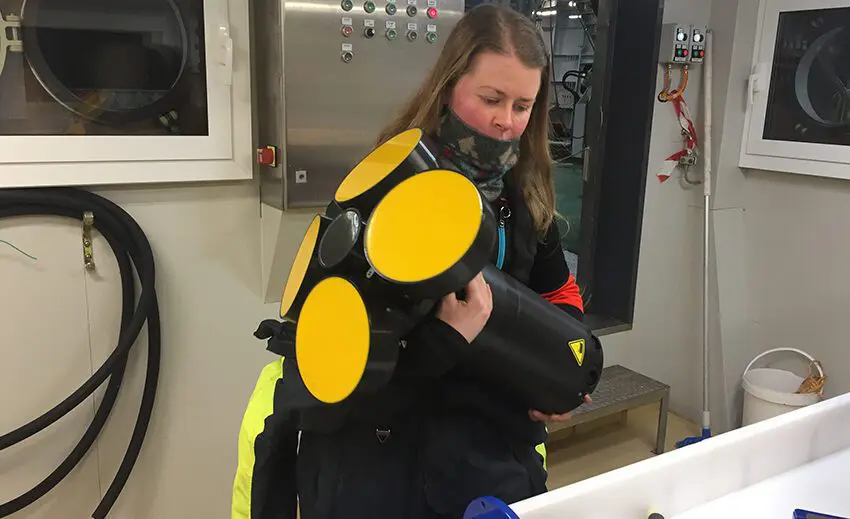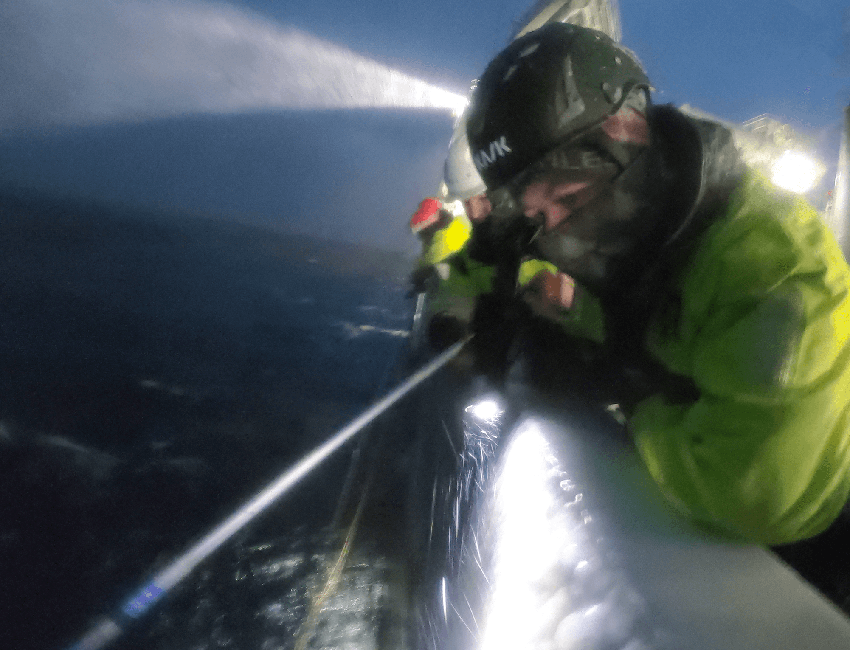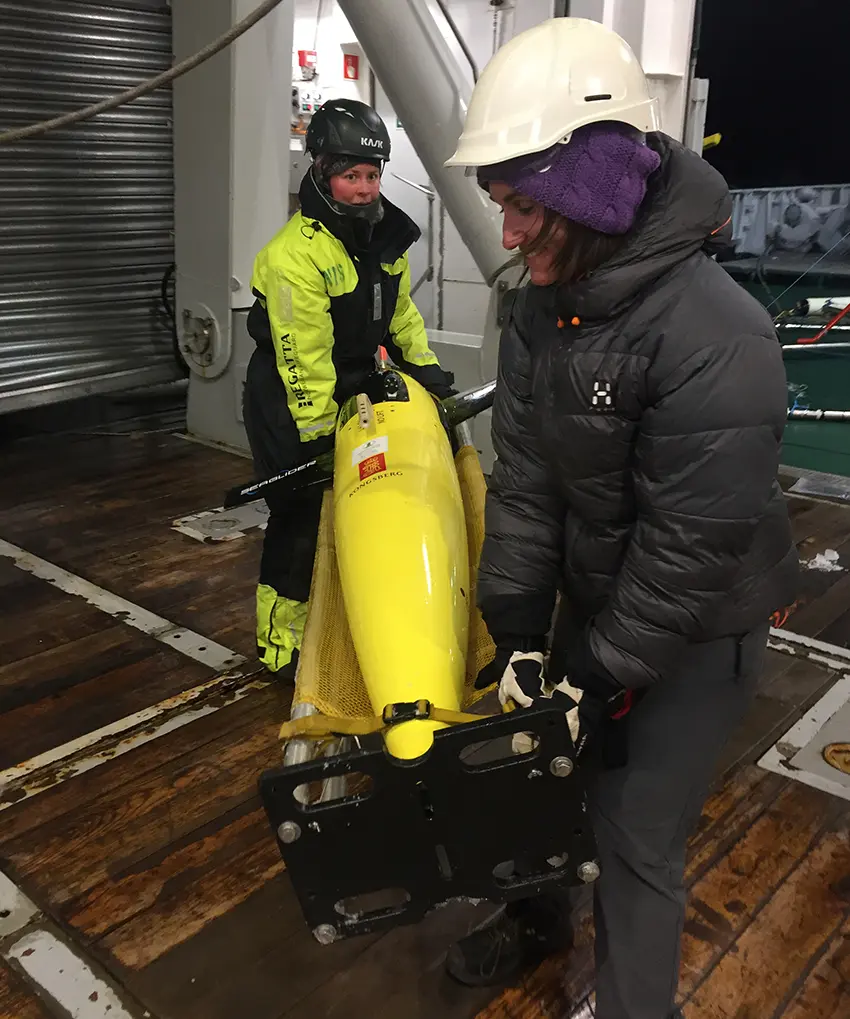Women in Science: Investigating the Barents Sea

Kjersti is preparing a new current meter (ADCP) for the M4 rig. The ADCP can measure ocean currents throughout the water column using sound propagation in water. This can also measure how much sea ice is drifting past. (Photo: Frank Nilsen/UNIS).
Top image: Kjersti Kalhagen is preparing a new current meter (ADCP) for the M4 rig onboard R/V Kronprins Haakon yesterday. The ADCP can measure ocean currents throughout the water column using sound propagation in water. This can also measure how much sea ice is drifting past. (Photo: Frank Nilsen/UNIS).
Meet Kjersti Kalhagen – Nansen Legacy PhD candidate at UNIS – currently far out at sea south of Spitsbergen!
11 February
Kjersti, together with colleagues from UNIS, University of Bergen, Norwegian Polar Institute, NTNU and Meteorological Institute of Norway are currently onboard R/V Kronprins Haakon on a cruise lasting 3 weeks. Kjersti has several tasks she hopes to complete during the cruise:
“On this cruise, we will study the physics of the sea, of the atmosphere and of the sea ice of the Barents Sea. The dark period of winter is a season with strong forcing and large air—sea interactions which are important to sample in order to understand the physical conditions later in the year. This is also a period that is not studied as much as late the other seasons.
We will visit and service some of the moorings that provide us with long time-series of temperature, salinity, and the speed and direction of the currents. Special for this year’s cruise is the rescue mission of the accidentally upside-down gateway mooring stuck on the seabed with data from the interesting previous winter.
In addition to securing the time series, we will gather measurements in troughs where Atlantic Water can intrude into the northern Barents Sea. We will also monitor the Polar Front which is the zone where Atlantic and Arctic water masses meet and we see large changes in physical and chemical water properties over a small area. From a station in the sea ice in northernmost part of our study area, we will study interactions between air, sea, and ice using a wide range of instruments”, she explains.
After the stop west of Spitsbergen to rescue a sea glider, the vessel is now sailing past Sørkapp heading for the waters east of Edgeøya.


The Nansen Legacy projectThe Nansen Legacy project consists of over 140 researchers from ten Norwegian research institutions, including UNIS. The aim is to investigate the past, present and future climate and ecosystem of the northern Barents Sea. On 11 February, we contribute to the International Day of Women and Girls in Science by presenting some of the many female researchers who are part of the Nansen Legacy project, or women who have contributed to the Nansen legacy throughout history. |